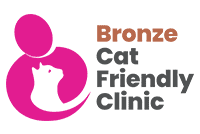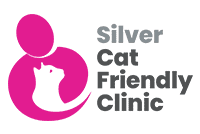What is Cushing's Syndrome?
Dogs with Cushing’s syndrome produce excessive amounts of cortisol. This can have harmful effects on other organs and on the ability of the body to regulate itself.
Cushing’s occurs in dogs who are producing excessive amounts of cortisol, an important hormone that helps to regulate the body’s metabolism. Cortisol plays a vital role in protein, carbohydrate and fat metabolism and is released into the bloodstream at times of stress to prepare the body for a flight or fight response. Cortisol is produced by the adrenal glands - two small glands located in the abdomen, next to each kidney. A hormone called ACTH controls the production and release of cortisol from the adrenal glands. ACTH itself is produced by the pituitary gland, a pea-sized gland located at the base of the brain. The concentration of cortisol in the blood of healthy animals varies greatly as the body’s demand for cortisol fluctuates. For example, during a period of anxiety or illness, it is normal for the adrenal glands to increase their production of cortisol. Once this period of stress has passed, the cortisol concentration in the blood returns to normal. In dogs with Cushing’s syndrome, there is a chronic overproduction of cortisol over weeks and months. Although the concentration of cortisol in the blood of a dog with Cushing’s also fluctuates greatly, it tends to be, on average, much higher than in healthy dogs. The excessive amount of cortisol released into the bloodstream has a harmful effect on the function of many organs and the body’s metabolism.
What causes Cushing's Syndrome?
Cushing’s will usually occur as a result of a tumour - often benign - of either the pituitary gland (most common) or adrenal glands (less common). Regardless of its cause, over time a dog suffering from Cushing’s will develop a combination of clinical signs which may initially be associated with the ageing process. Most dogs with Cushing’s (approximately 85% of cases) have a benign tumour of the pituitary gland. The tumour cells produce large amounts of the hormone ACTH, which in turn stimulates the adrenal glands to overproduce cortisol.
The other cause of Cushing’s (approximately 15% of cases) is a tumour of one (or very rarely both) of the adrenal glands, which produces excessive amounts of cortisol. Irrespective of the cause of Cushing’s syndrome in your dog, the result is always the same - more cortisol is produced than is needed by the body. This results in the slow development of a combination of clinical signs that are classically associated with Cushing’s. IF LEFT UNTREATED... your dog may develop other serious conditions which will weaken its body and require further costly treatment. Aside from the impact on your dog’s quality of life, if left untreated Cushing’s syndrome increases your dog’s risk of developing several serious conditions such as diabetes mellitus (a deficiency of insulin resulting in high blood sugar), blood clots in the lungs/ brain/ legs, kidney infection, urinary tract infection and inflammation of the pancreas.
Diagnosis of Cushing's Syndrome
Initial signs might alert your veterinary surgeon to Cushing’s syndrome. Diagnosis is not always straightforward. Your dog will need to undergo a series of blood tests. Cushing's is more often seen in older dogs and in smaller breeds of dogs. Hair loss, pot belly, skin diseases, changes in behaviour, frequent urination and a ravenous appetite are some of the most noticeable signs. Cushing’s is usually seen in older dogs (10-15 years old). Small-breed dogs are more likely to develop the disease. The most common signs of the disease are very similar to those associated with the normal ageing process. This can make it difficult to diagnose and later monitor. It is always a good idea wherever possible to keep a note of the changes you see in your dog’s habits, behaviour and appearance. The most noticeable signs of Cushing’s syndrome include:
- Large water intake
- Frequent urination and possible incontinence
- Ravenous appetite
- Potbelly
- Thin skin
- Hair loss or recurrent skin diseases
- Muscle wastage
- Lethargy
- Excessive panting
Not all dogs will react to the disease in the same way and your dog may not necessarily display all of these signs. If you become concerned with your dog’s welfare, you should consult your veterinary surgeon immediately. Your veterinary surgeon will initially suspect Cushing’s syndrome based on the clinical signs your dog is showing. You may have taken your dog for a check-up because you have noticed that it is drinking and urinating more than usual. Your veterinary surgeon may have noticed a change in your dog’s appearance, such as a prominent “pot belly”. Sometimes, the results of a routine blood test may lead your veterinary surgeon to suspect this condition. In most cases, the changes in your dog’s appearance and behaviour caused by Cushing’s occur very gradually, making them easy to overlook. Once your veterinary surgeon suspects Cushing’s, he/she will need to perform blood tests to confirm the diagnosis. A blood test to assess your dog’s general health is also recommended. You might remember that the concentration of cortisol in the blood of both healthy dogs and dogs with Cushing’s fluctuates greatly throughout the day. It is for this reason that a diagnosis cannot be confirmed by just one measurement of cortisol. The two tests that are used to confirm a diagnosis of Cushing’s are called the ACTH stimulation test and the low-dose dexamethasone suppression test. It may be necessary to perform both tests.
In the ACTH stimulation test, blood is taken to measure cortisol before and after your dog is given a synthetic version of the hormone, ACTH. This test assesses how well your dog’s adrenal glands control the production of cortisol.
Managing Cushing's Syndrome
Cushing’s syndrome is not curable but with medication (Vetoryl®) it can be very effectively controlled; maintaining a good quality of life for your dog for years to come. Vetoryl®, which is the only licensed treatment for use in dogs, contains the active ingredient trilostane, a drug that rapidly reduces the production of cortisol by the adrenal glands. Your dog will need to be carefully monitored and return for follow-up appointments with us at Shires Vets regularly. Once your veterinary surgeon is happy that your dog is stable, you will normally need to visit every three months to make sure nothing is affecting your dog’s condition. At some stage during therapy, it might become necessary to adjust the dose of Vetoryl® prescribed. Your dog will begin Vetoryl® at the recommended starting dose dependent on its body weight. You should then make an appointment for your dog to see your veterinary surgeon after 10 days. Your dog should be regularly examined and monitored using blood tests. Your veterinary surgeon will assess your dog’s response to Vetoryl® treatment by:
- Looking for an improvement in clinical signs: In most cases, you can expect to see a decrease in your dog’s appetite and the amount they drink within the first couple of weeks on treatment. Other clinical signs may take 3 to 6 months to improve.
- Performing blood tests: The results of routine blood tests and an ACTH stimulation test are used to assess the effectiveness of Vetoryl® treatment at 10 days, 4 weeks, 12 weeks and every 3 months after starting treatment, depending on your vet at Shires Vets recommendation.
Your dog should be closely monitored in the early stages of therapy so that the dose of Vetoryl® can be adjusted to meet its specific needs. This also helps to minimise the risk of side effects or complications that could be harmful to your dog.
Once your veterinary surgeon at Shire Vets is happy with your dog’s progress, it is strongly recommended that you visit your veterinary surgeon every 3 months for regular monitoring so that dose adjustments can be made as required.
Frequently asked questions:
Why do I have to give Vetoryl® every day? The active ingredient in Vetoryl® is a drug called trilostane. Trilostane is a short-acting drug which needs to be given every day to control the disease. How do I give Vetoryl® to my dog? Vetoryl® comes in a range of capsule sizes. Your veterinary surgeon will advise you of the right dose for your dog. We recommend that you GIVE YOUR DOG HIS/HER VETORYL® WITH A MEAL IN THE MORNING, as this will make it easier for your veterinary surgeon to perform monitoring tests 4-6 hours after dosing. What should I do if I forget to give a capsule? Speak to your veterinary surgeon. DO NOT give a double dose the next day. How long will my dog require treatment? Most dogs need to be given Vetoryl® every day for life. How long will it take for my dog to improve on treatment? The clinical signs of Cushing’s such as lethargy, increased drinking, eating and urination improve quickly - often within the first two weeks of treatment. Skin changes and hair loss take up to 3 to 6 months to improve. What is my dog's long-term prognosis when Cushing's disease is controlled? The median survival time is 2-3 years (ranging from weeks to years) so is variable between individuals. Will I need to revisit my veterinary surgeon? Yes. It is important that your dog revisits your veterinary surgeon for assessment and monitoring tests at 10 days, 4 weeks and 12 weeks after starting Vetoryl®, and thereafter every three months. The time interval for repeat checks will be discussed by your vet for your dog. If your dog becomes unwell at any time whilst on Vetoryl®, stop treatment and consult your veterinary surgeon as soon as possible. Does Vetoryl® have any side effects? Vetoryl® is well-tolerated by most dogs. If your dog develops any signs of illness while on Vetoryl® including lethargy, vomiting, diarrhoea and anorexia, stop treatment immediately and contact your veterinary surgeon as soon as possible. What costs are involved? Cushing's disease can be quite costly to manage due to the medication cost and requirement for repeat blood testing to ensure over- or under-dosing is not occurring. We would rather you are aware of potential costs from the beginning to help you make informed decisions when investigating and starting treatment.
ESTIMATED costs for Managing Cushing's Syndrome
(Based on Shires Vets prices in January 2015) Diagnosis of Cushing's Disease after initial blood screen:
ACTH stimulation test (initial) £95
LDDST (40% of dogs require this additionally) £120 One month's supply of Vetoryl for your dog (NB dosage and hence cost may change/ increase depending on the response to medication)
- 10Kg dog £54
- 10-20Kg dog £66
- 20-40Kg dog £105
Repeat ACTH stimulation test plus electrolytes (at 1 month then every 3 months, possibly progressing to every 6 months if the condition is stable) £97 Repeat Consultation (when vet examines to check progress) £22 Next consult: Check up ~10-14 days after starting Vetoryl (ideally a morning appointment) unless vet stipulates otherwise. Next ACTH stimulation test 4 weeks after starting Vetoryl (morning appointment, we will keep your pet with us over lunchtime to perform this test). Please ensure you don't run out of Vetoryl before this appointment (phone reception for a repeat prescription if needed). Repeat Prescriptions: Please try to give us 48-hour notice when you require a repeat prescription of your Vetoryl. Written prescriptions are available on request for medications (Current charge £14 for a written prescription lasting 3 months) if you wish to source your medications from another vet/ pharmacy/online pharmacy.










